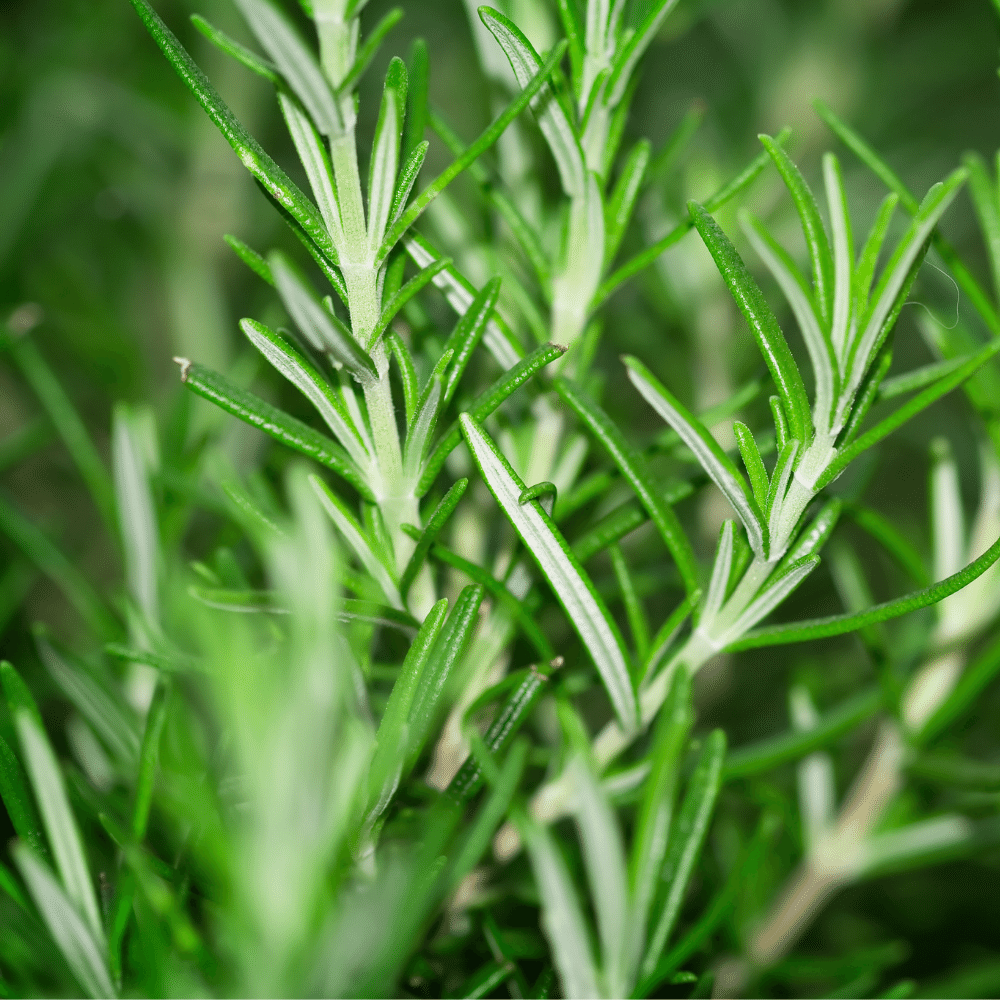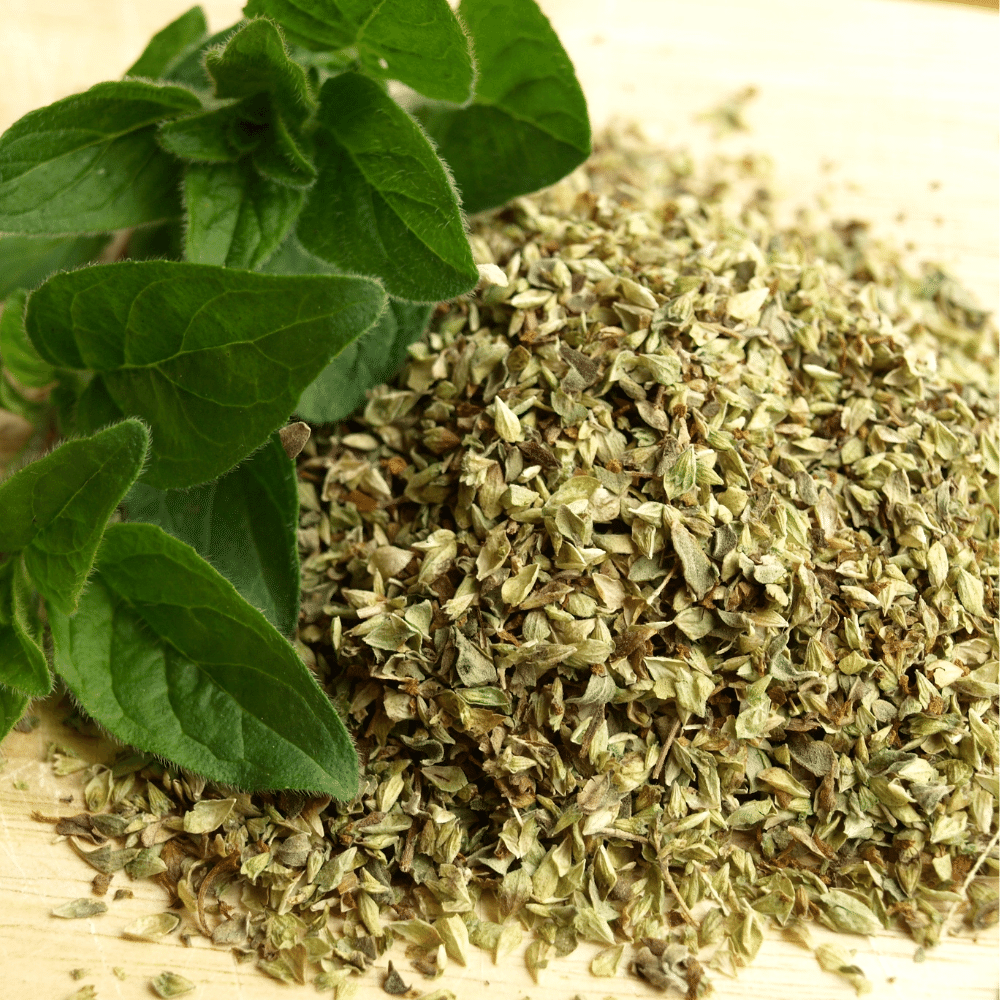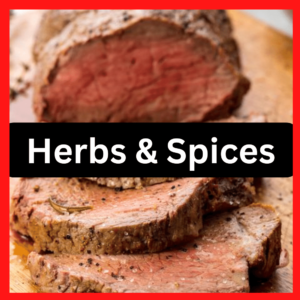Are you looking for some of the best herbs and spices to use when cooking beef tenderloin?
Then you are in the right place.
I have rounded up 8 of my favorite herbs and spices to use when making this delicious dish.
Whether you are looking for a simple seasoning or something a little more complex, there is sure to be an herb or spice on this list that you’ll love.
So go ahead and give one (or all!) of these herbs and spices a try the next time you make beef tenderloin!
See Also:
- What Sauce to Serve with Beef Tenderloin (16 Sauces)
- Beef Tenderloin Wine Pairing – The Best Wines for Beef Tenderloin

8 Best Herbs and Spices for Beef Tenderloin
I don’t think you should settle for anything less than the best when it comes to beef tenderloin.
See Also: 16 Best Salads to Serve with Beef Tenderloin
This is a special occasion dish, so you want to make sure it’s packed with flavor.
The right blend of herbs and spices can take your beef tenderloin from good to great.
Here are 8 of the best herbs and spices to use in beef tenderloin:
1. Parsley

Parsley has a clean and peppery taste (if that’s a thing) that can really enhance the flavor of your beef tenderloin.
I would recommend using it in a rub or paste form so that the flavor has a chance to really sink into the meat.
Here are two recipes that use parsley:
- Parsley Crusted Beef Tenderloin: This recipe calls for a lot of other ingredients, but they come together to create an amazing dish. You’ll need: beef tenderloin, Dijon mustard, garlic, onion, bread crumbs, Parmesan cheese, salt, and pepper.
- Parsley and Herb Crusted Beef Tenderloin: This recipe is very similar to the first one, but it uses different herbs. You’ll need: beef tenderloin, Dijon mustard, garlic, onion, bread crumbs, Parmesan cheese, thyme, rosemary, and oregano.
2. Thyme

Thyme usually has a sharp, almost minty flavor (yet not as strong as mint) that can really enhance the flavor of beef tenderloin.
It’s a very versatile herb/spice, so it can be used in many different ways.
Here are some tips for using thyme:
- If you’re using dried thyme, make sure to crush it up a bit before adding it to your dish. This will help release the flavor.
- A little goes a long way with thyme, so start with a small amount and then add more to taste.
- Thyme pairs well with other flavors like garlic, lemon, and rosemary. If you’re using fresh thyme, you can also throw in a few sprigs of rosemary or sage.
Here are some ideas for dishes that include thyme:
- Beef tenderloin with roasted vegetables: Season your beef tenderloin with salt, pepper, and thyme then roast in the oven. Serve with roasted vegetables like carrots, potatoes, and Brussels sprouts.
- Grilled steak salad: Season your steak with salt, pepper, and thyme then grill to your desired doneness. Slice the steak and serve over a salad of greens and other veggies like cherry tomatoes, red onions, and croutons.
- Thyme roasted chicken: Rub a whole chicken with olive oil then season with salt, pepper, and thyme. Roast in the oven until cooked through.
3. Rosemary

This lemony-pine-like herb is a classic for a reason.
It goes great with so many different dishes, but it especially shines when paired with beef.
There are a few things to keep in mind when using rosemary, though.
First of all, a little goes a long way – you don’t need to use much at all to get the flavor you’re looking for.
Secondly, if you’re using fresh rosemary, it’s best to chop it up pretty finely before adding it to your dish.
If you don’t have a knife that’s sharp enough to do the job, you can always give it a quick whirl in the food processor.
As for how to use it, there are lots of options.
- You can add it to a simple pan sauce for beef tenderloin, or use it to make a flavorful rub for the meat itself.
- If you’re feeling really adventurous, try making rosemary-infused oil or vinegar – they’ll add an extra zing to any dish you use them in!
4. Sage

Sage is earthy, slightly peppery taste with hints of mint (though it is not in the mint family).
It’s a very popular herb that is often used in stuffings and pairs well with poultry, pork, and lamb.
When using sage, it’s important to use it sparingly as a little goes a long way.
I also recommend crushing the leaves before adding them to your dish as this will help release the flavor.
Here are some ideas for using sage:
- Sage and Onion Stuffing: This is a classic stuffing recipe that is made by combining sage, onion, bread crumbs, and butter. You can stuff this mixture into chicken or turkey before roasting.
- Sage and Mushroom Sauce: This sauce is perfect for topping beef tenderloin. To make it, simply saute mushrooms and onions in butter, then add flour to make a roux. Once the roux has thickened, slowly whisk in chicken or beef broth. Finally, add sage and thyme leaves and cook until the sauce has reduced and thickened. Serve over cooked beef tenderloin.
- Sage Rubbed Beef Tenderloin: Combine crushed sage leaves with garlic powder, salt, and pepper. Rub this mixture all over a beef tenderloin roast, then sear in a hot pan on all sides. Place the roast in a preheated oven and cook until it reaches the desired level of doneness. Let rest for 10 minutes before slicing and serving.
5. Oregano

Oregano has a slightly bitter, pungent taste (think of it as a more intense version of basil) that can really liven up a dish.
When used sparingly, it can be a great way to add flavor to your beef tenderloin without overwhelming the other ingredients.
A few tips for using oregano:
- Add it at the end of cooking so that the heat doesn’t cause the flavor to become too intense.
- Try pairing it with other strong flavors like garlic, onion, or lemon.
- A little goes a long way, so start with a pinch and add more to taste.
Here are some ideas for using oregano in your beef tenderloin dish:
- Mix it into a compound butter and spread over the meat before cooking.
- Sprinkle it over the meat after cooking, along with some fresh lemon juice.
- Stir it into your pan sauce for extra flavor.
6. Basil

Basil is a balance between sweet and savory – so it can go well with almost anything!
I think that beef tenderloin is the perfect candidate for a little basil flavor.
There are a few things to keep in mind when using basil:
- If you’re using dried basil, make sure to rehydrate it in water for about 10 minutes before adding it to your dish. This will help the Basil rehydrate and soften so that it can properly infuse its flavor.
- If you’re using fresh basil, add it towards the end of cooking so that its delicate flavor doesn’t get lost.
Here are some ideas for using Basil with beef tenderloin:
- Try adding some chopped Basil to your favorite steak marinade recipe.
- Sprinkle some Basil on top of grilled or roasted beef tenderloin.
- Make a quick pan sauce by deglazing the pan with beef broth after cooking the beef tenderloin. Then, add in some chopped fresh Basil and let it simmer for a minute or two.
7. Garlic Powder

If you’re out of fresh garlic (or just don’t want to deal with peeling and mincing), garlic powder is a great alternative.
It’s also more potent than fresh garlic, so you don’t need to use as much.
Garlic powder is made from ground, dehydrated garlic and it’s easy to find in the spice aisle of most supermarkets.
Here are a few tips for using garlic powder:
- Add it to dry rubs for meats or vegetables.
- Mix it with olive oil and use it as a marinade for chicken, fish, or beef.
- Stir it into soups or stews for extra flavor.
- Sprinkle it on popcorn or roasted nuts.
- Mix it with mayonnaise or sour cream to make a flavorful dip or spread.
8. Onion Powder

Onion powder adds something that fresh onions can’t quite provide on their own: a deep, rich flavor that permeates the entire dish.
It’s perfect for beef tenderloin, which can be a bit bland on its own.
I recommend using onion powder in place of salt in your beef tenderloin recipe.
This will give the beef a more complex flavor without making it overly salty.
You can also add onion powder to the pan when you’re cooking the beef, or sprinkle it on top of the cooked beef before serving.
If you want to use fresh onions in your recipe, you can certainly do so
Just be aware that they will add a bit of sweetness and crunchiness to the dish, which may not be what you’re going for.
In this case, I would recommend using yellow onions rather than red onions.
Yellow onions have a milder flavor than red onions, so they won’t overpower the beef.
They also tend to cook down more evenly, so you won’t end up with big chunks of onion in your finished dish.

8 Best Herbs and Spices for Beef Tenderloin
Ingredients
- Parsley
- Thyme
- Rosemary
- Sage
- Oregano
- Basil
- Garlic Powder
- Onion Powder
Instructions
- Choose your favorite herbs or spices from this list to use with your beef tenderloin recipe.
- Prepare the rest of your meal.
- Enjoy in no time!
Hi, I'm Benjamin. I love cooking, long walks, and my girlfriend! Here you’ll find simple and delicious recipes that you can make in 30 minutes or less.

